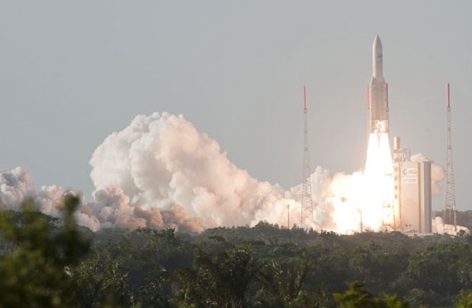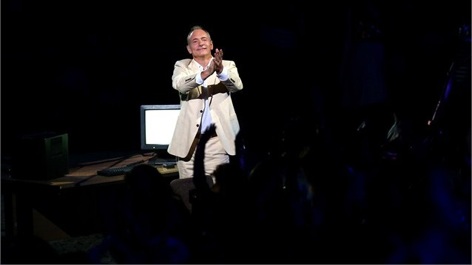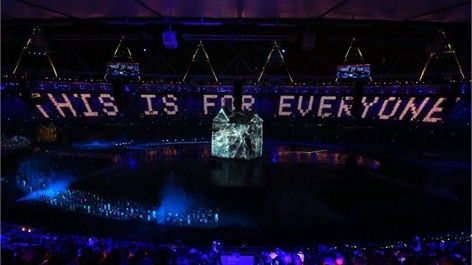It’s been a good week for marvelling at human capability. I’m sure most readers are as glued as we are to the Olympics, where the amazing athletes are testing the limits of the human body and spirit. And we’ve also had a dramatic demonstration of human ingenuity, with the successful landing of MSL-Curiosity, NASA’s car-sized Mars rover, thanks to to the inventiveness of JPL’s Adam Steltzner and his entry, descent and landing team, who conceived, designed and built the Skycrane system.
It’s not often that I run out of superlatives after the first paragraph, but it’s been that sort of week.
One technological feat has been pretty much overshadowed by the news of sport and planetary science. It might seem quite routine, but for millions of people it will be momentous. Last Thursday, in a routine launch from the Kourou Space Centre in French Guiana, an Ariane 5 rocket put a communications satellite called Hylas 2 into orbit. Part of a family of adaptable satellites owned by London-based Avanti Communications, Hylas 2 will help bring broadband internet connectivity to central Asia, the Middle East and southern and eastern Africa, including some of the most isolated rural communities in countries like Angola and Namibia.

Internet connectivity is becoming increasingly important in the developing world. Generally accessed using mobile devices, it’s used by farmers and fishermen to find the markets that will pay the best prices for their produce; increasingly, it’s giving information about clean water and healthcare, both for the locals and for the service providers. Add this to the everyday uses of just allowing people to stay in touch with each other, and it adds up to a raft of ways to improve standards of living, reduce poverty and generally ease conditions in some of the toughest places to live on the planet.
We take technology like the internet so much for granted in the UK that it’s sometimes easy to forget how revolutionary it is. Perhaps that’s why some people look askance at, for example, India’s space programme: how can a country with so much poverty indulge in such luxury? But much of the space programme in India is directed towards projects like Hylas 2, which are improving communications around that vast country and helping to allieviate that poverty.

Looking at it that way, perhaps the most significant part of last weekend’s Olympic opening ceremony was the point where a modest-looking, sandy-haired man was revealed sitting at a desk in the middle of the stadium. Tim Berners-Lee, inventor of the World Wide Web, the collection of documents, pictures and datasets that we access via the internet, tapped out a message and sent it to the world via Twitter: THIS IS FOR EVERYONE. I suspect that it’s only in the coming decades that we’ll appreciate the true magnitude of his gift.

Finally, a recollection of a giant of British science and technology. A few years ago, I attended an event at Jodrell Bank, to mark the 50th anniversary of the Lovell Telescope; the giant dish first entered service by tracking the progress of the first artificial satellite, Sputnik 1. To mark the occasion, Sir Bernard Lovell, the driving force behind radio telescopy who died yesterday, gave a short speech in which he not-so-gently prodded attending politicians about their lack of understanding and support for science and technology, and had a video chat with one of the Russian scientists behind Sputnik; a few months older than Lovell, he touchingly congratulated ‘his young friend’ on his achievements. Lovell, although obviously very frail, made a point of talking to as many of the scientists at the event as he could. He never lost his curiosity and that, as his Russian counterpart said, ensured that he’d always be a young friend.











Water Sector Talent Exodus Could Cripple The Sector
Maybe if things are essential for the running of a country and we want to pay a fair price we should be running these utilities on a not for profit...